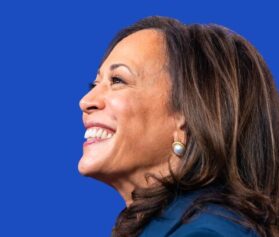Since 2020, Black Americans have experienced job gains, but as inflation sets in these gains are fragile.
The gains have been significant. Employment of Black Americans of “prime working age” — 25 to 54 — increased to 77.4 percent in April. This is the highest it’s been in 22 years, according to economists. And, even though it is significantly below the equivalent measure for white Americans, the spike reduced the gap between the two figures to the narrowest on record.

The gains have been significant. Employment of Black Americans of “prime working age” — 25 to 54 — increased to 77.4 percent in April. This is the highest it’s been in 22 years, according to economists. And, even though it is significantly below the equivalent measure for white Americans, the spike reduced the gap between the two figures to the narrowest on record — in data stretching back to 1994.
Inflation’s threat on this progress is similar to what happened after the 2008 to 2009 recession. It took nine years for Black unemployment to return to levels that prevailed before the downturn.
“On the whole, we’re seeing that frankly a lot of Black workers are able to take advantage of the tightness of the labor market and strong employer demand to get jobs that would have taken much longer to get in other past downturns,” Joelle Gamble, the chief economist at the US Department of Labor, told Bloomberg.
Part of the difference this time around relates to the response by the U.S. government and the Federal Reserve System.
According to Evgeniya Duzhak, an economist at the San Francisco Fed, Black employment also may have gotten a boost because of the need for some industry to remain up and running during the pandemic. And then there was the post pandemic hiring frenzy.
Black unemployment didn’t go up during the pandemic as much as some would have been expected “partly because over 25 percent of Black men are employed in production, transportation and material moving occupations, and those occupations fared better than the service sector,” Duzhak explained an analysis posted to the San Francisco Fed bank’s website on May 16.
Yet all this progress might be pushed back in an effort to curb inflation.
Since economic policymakers in the White House and at the Fed are focusing on slowing price pressures through austerity measures instead of through rebuilding, the employment progress could be reversed.
Howard University economics professor William Spriggs, who is also the chief economist for the American Federation of Labor and Congress of Industrial Organizations, says this poses an existential risk to the entire effort of building a more inclusive economy, Bloomberg reported.
“We’re still going to be the last hired, so if you increase the unemployment rate, you just undo all the gains,” Spriggs said. “What’s the point of the tight labor market? It is the necessary condition for Black advancement.”
The government says it is working to attack inflation and on May 31 President Joe Biden unveiled out a three-part plan for combating high inflation.
The first part of his plan was an acknowledgment that the Federal Reserve “has a primary responsibility to control inflation,” The Hill reported. Secondly, the administration vowed to making goods more affordable with a focus on high gas prices. And the third part involves reducing the federal deficit through “common-sense reforms to the tax code.”




